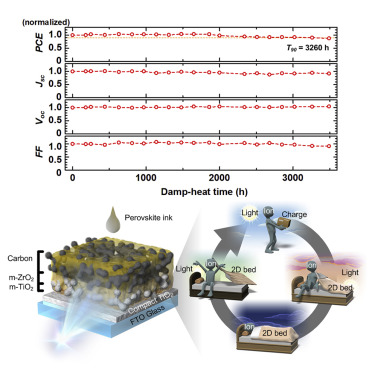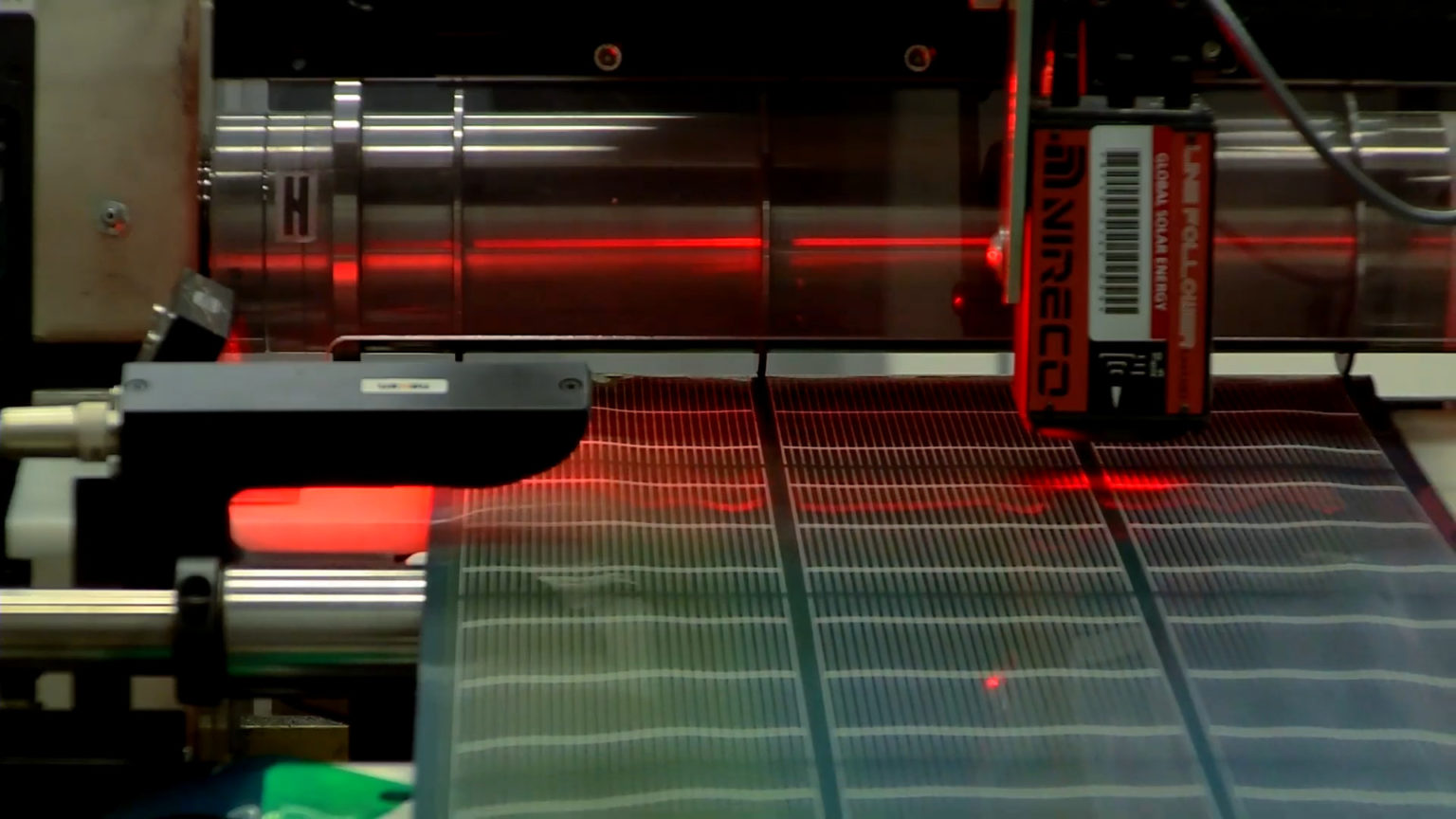

兵库県立大学:20 年的户外耐久性:钙钛矿
-带碳电极的钙钛矿太阳能电池-
兵库県立大学
纪州技研工业
该研究小组成功地“获得了相当于20年寿命的世界上最长的户外环境”。
“这一结果极大地支持了钙钛矿太阳能电池的实际应用。”
这项研究:
由战略国际合作研究计划 (SICORP) 提供。
Solaronics, 瑞士,
与德国弗劳恩霍夫研究所合作,
联合研究团队的成果。
研究详情:
2021年11月13日发表在《细胞报告物理科学》上。
下一代太阳能电池板:
“配备碳电极的钙钛矿太阳能电池性能”是“利用光照射恢复的机制”。
什么是钙钛矿太阳能电池?
钙钛矿太阳能电池有望成为下一代太阳能电池板。
与硅太阳能电池相比:
与目前主流的硅基太阳能电池相比,
高转换效率潜力和
可以预期低制造成本。
用于硅基太阳能电池
用1/300的薄膜,
因为它可以发电
它可以很容易地减轻重量。
对太阳能电池新应用的扩展也有期待。
研究组发展内容:
具有碳电极的钙钛矿太阳能电池。
具有多孔结构的氧化钛,
氧化锆,
通过印刷形成三层碳电极。
钙钛矿油墨
浸泡至底部并进行热处理
使钙钛矿层结晶并
它起到太阳能电池的作用。
改进的电导率值:
当电池暴露在阳光下时,
太阳能电池的输出参数,
开路电压和曲线系数(与电导率相关的特征值)得到改善。
抑制发电输出劣化:
在耐久性验证试验中,“发电输出劣化到初始值的90%所需的时间”
记录了 3260 小时。
这对应于“在室外环境中的 20 年耐用性(寿命)”。
与硅基太阳能电池相当的耐用性,
这是钙钛矿太阳能电池的首次演示。
具有碳电极的钙钛矿太阳能电池:
不需要真空工艺,碳电极比金属电极便宜,
通过在整个涂层过程中使用轻质基材,可以轻松确保轻盈。
石墨和碘的生产:
用碳电极(石墨)和碘生产
日本在世界市场上占有20-30%的份额。
据说有可以期待高竞争力的优点。
-智能日本
https://www.itmedia.co.jp/smartjapan/articles/2111/17/news068.html
联合公告:配备碳电极的钙钛矿太阳能电池通过光照射恢复性能
-证明世界上最长的户外环境的耐用性相当于 20 年-
https://www.jst.go.jp/pr/announce/20211113-2/index.html
Light-induced performance increase of carbon-based perovskite solar module for 20-year stability
Highlights
• Perovskite solar modules with a stability equivalent to 20 years are demonstrated
• Light-soaking treatment contributes to the efficiency and stability of the module
• The absolute increase in module efficiency is up to 1.4% during light soaking
• Light-soaking effect is associated with charge transport and ion migration
Summary
Improving stability has become one of the most important objectives in the practical application of perovskite photovoltaics.
Here, we develop encapsulated mesoporous-carbon perovskite solar mini-modules
that retain more than 92% of their initial performance after 3,000 h of damp-heat aging at 85°C/85% relative humidity,
while maintaining 90% of the initial value (T90) for 3,260 h,
equivalent to 20-year stability in outdoor use.
This stability is attributed to the light-induced performance increase phenomenon.
The mechanism is associated with the organic molecules 5-ammoniumvaleric acid and methylammonium
forming a quasi-2-dimensional perovskite/metal oxide interface with a positive effect on charge transport and ion migration.
This work extends our present understanding of the mechanism underlying the light-induced performance and stability increase.
– ScienceDirect
https://www.sciencedirect.com/science/article/pii/S2666386421003702
Mesoporous carbon for a 20-year stable perovskite solar cell – pv magazine International
https://www.pv-magazine.com/2021/11/15/mesoporous-carbon-for-a-20-year-stable-perovskite-solar-cell/